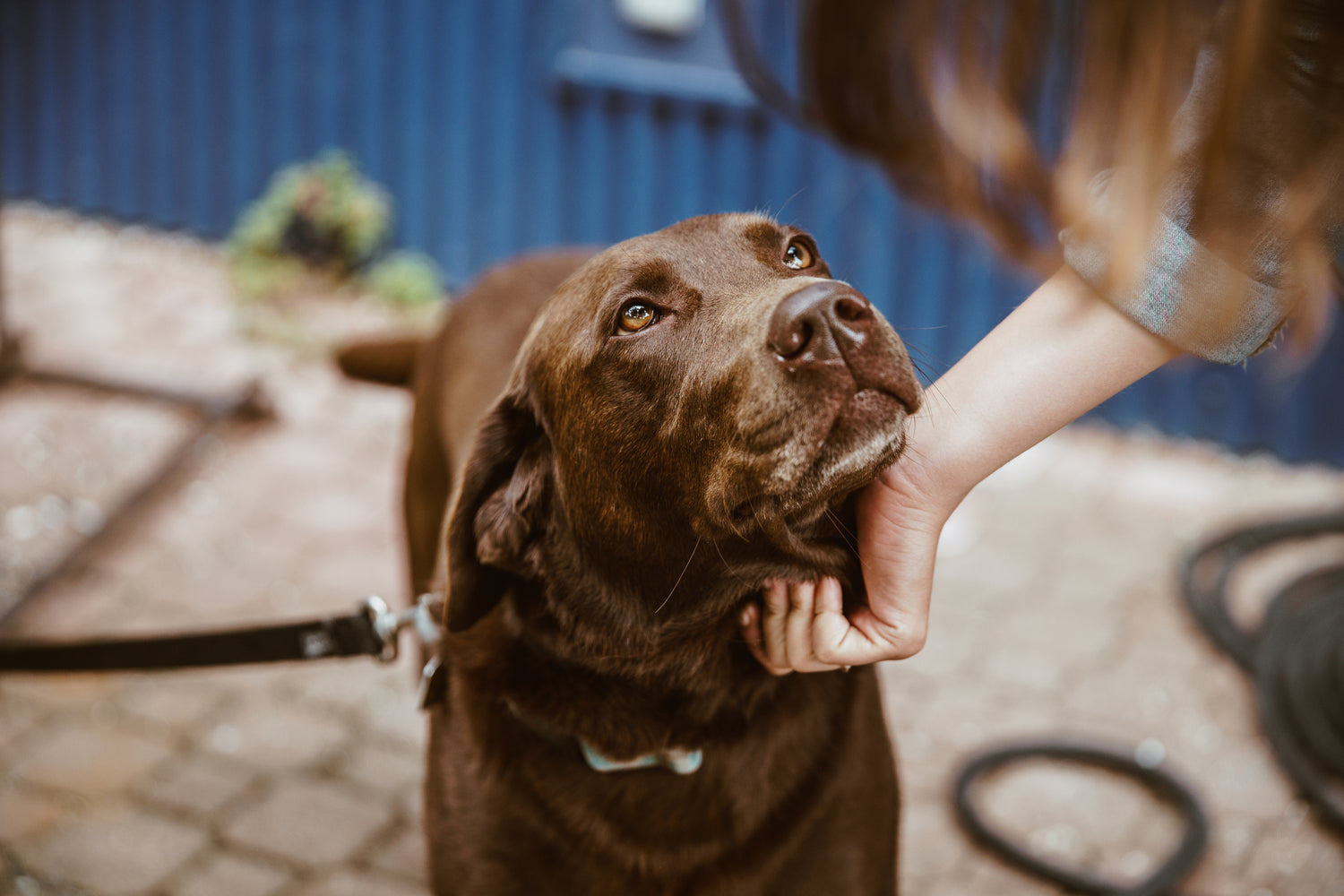Does My Dog Have Hip Dysplasia?
What Should I Do?

Hip dysplasia is a painful condition. The hip joint develops abnormally and, as a result, the 'ball' at the top of the thigh bone (femur) no longer fits smoothly into the socket of the hip joint. The joint becomes unstable and too loose. The two bones of the joint no longer glide smoothly against each other.
It is an inherited condition. There's quite a high possibility of Labrador hip dysplasia developing. Unfortunately, Labradors are one of the breeds more prone to developing hip dysplasia. If you're considering getting a Labrador puppy, it's wise to check the parents' hip and elbow scores. Parents with poor scores means their Labrador puppies are more likely to develop joint problems. Likewise if you're considering breeding from your Labrador (see below for advice).
If your Labrador has been diagnosed with hip dysplasia you should always seek advice from your vet about the most appropriate treatment for hip dysplasia in your dog. Whether this is surgical or conservative (non-surgical) will depend on various factors, including level of severity, stage at which it's diagnosed, and the age of your dog.
Treatment includes:
It's also worth investing in an orthopaedic dog bed if you don't have one. This will support your Labradors's joints properly, minimising pain as much as possible, while your dog sleeps or rests.
You can read more about treatments for hip dysplasia in your dog here https://zoomadog.co.uk/blogs/blog/faq-hip-dog-dysplasia-what-to-do
Certain breeds are much more likely to develop hip dysplasia. Usually these are larger breed dogs although it is also found in smaller dogs too. High risk Breeds include Labradors, Retrievers, German Shepherds, Rottweilers, Newfoundlands and Bernese Mountain dogs.
When breeding from any dog which is a larger breed or known to be at risk of hip dysplasia you should always have their hips x-rayed and then scored with a ‘hip score’. Only if this hip score is sufficiently low as well as the hip score of the other breeding partner, should you breed. In this way it is hoped that eventually hip dysplasia can be reduced or even eliminated. Not dog who has ever been diagnosed or treated for hip dysplasia should be bred from.
Read more about Dog Hip Dysplasia Causes, Prevention and How to Help at home https://zoomadog.co.uk/collections/dog-hip-dysplasia-braces-signs-and-treatment
What Should I Do?
What Are The First Signs of Hip Dysplasia In Dogs?
What Are The Different Levels of Hip Dysplasia in My Dog?
What Should I Do?
What Should I Do?
For Hip Dysplasia For A Dog?
What Should I Do?
My Dog Has Very Bad Arthritis In His Hips. What Should I Do?
What Happens, Is It Successful, What I Should Know?
My Dog Is Too Old / Too Risky For Hip Dysplasia Surgery. What Are The Non-Surgical Options?
Can Physiotherapy and Hydrotherapy Help my Dog with Hip Dysplasia?
My Elderly Labrador has Hind Leg Hip Weakness. Does He Have Hip Dysplasia?
I Have a 13-year-old Border Collie with Hip Dysplasia in his Rear Right Hip. What Should I Do?
with Hip Dysplasia

We can help find the right solution for your dog
Feel free to give us a call on 01730 622544
or email us at woof@zoomadog.co.uk
Leave a comment